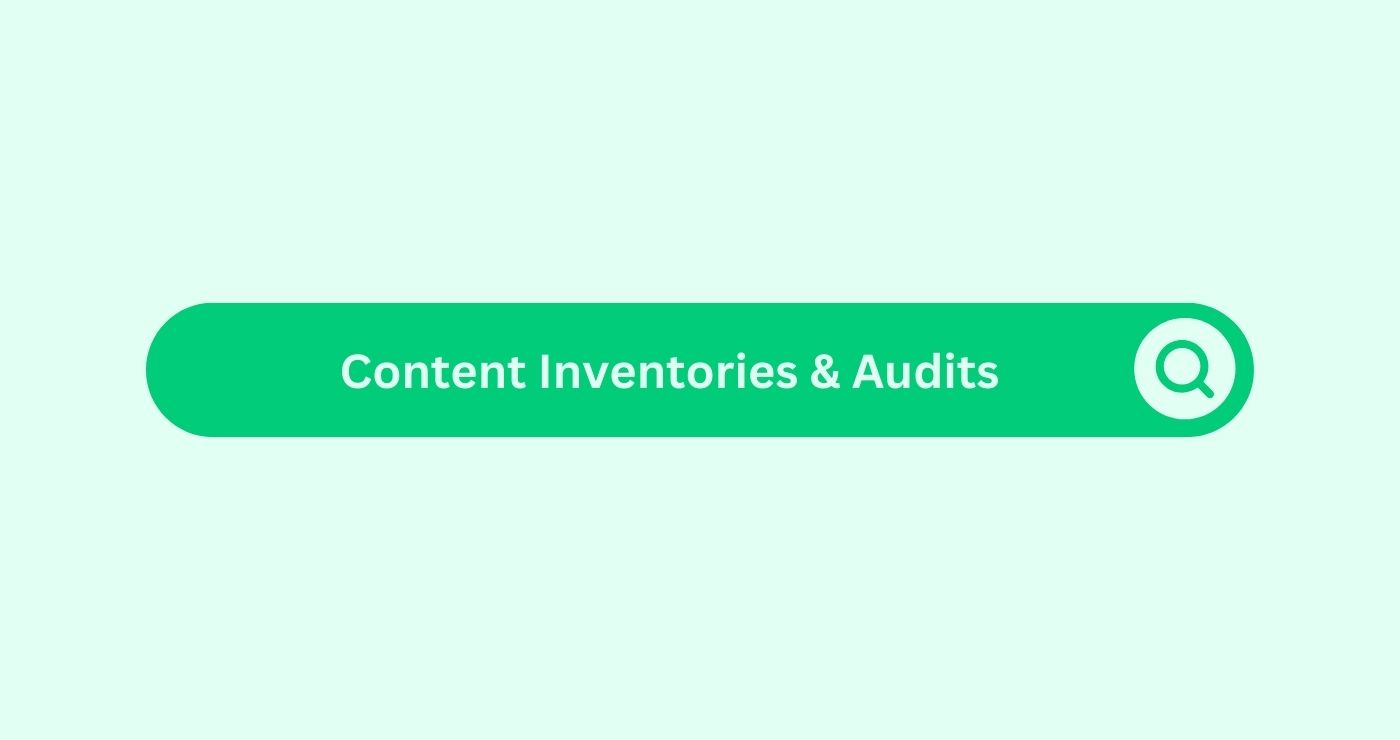Definition
Content Inventories and Audits are essential componentsDefinition Components in the SEO space refer to the individu... of an effective SEO strategy. A content inventory involves cataloging all the content on your website, including webpages, blog posts, videos, infographics, and other multimediaDefinition Multimedia refers to the use of various content f.... This process provides a comprehensive overview of the existing content, allowing you to understand what you have, how it’s structured, and where it resides.
A content auditDefinition A Content Audit is a systematic evaluation of all..., on the other hand, is a systematic examination and evaluation of this content. The goal is to assess the performance, quality, relevanceDefinition In SEO, relevance refers to the degree to which a..., and effectiveness of each piece of content. This involves analysing various metricsWhat are Metrics in the context of SEO? Metrics in SEO refer... such as page views, bounce rates, conversionDefinition In the realm of SEO, Conversion refers to the pro... rates, and SEO performance indicators like keyword rankings and backlinksWhat are backlinks in the context of SEO? Backlinks, also kn.... By conducting a content auditDefinition A Content Audit is a systematic evaluation of all..., you can identify strengths, weaknesses, gaps, and opportunities for improvement in your content strategyDefinition Content strategy involves planning, creating, pub....
How You Can Use
To effectively use content inventories and audits in your SEO strategy, follow these steps:
- Conduct a Content Inventory: Start by cataloging all the content on your website. Use tools like spreadsheets or specialised software to list all URLs and associated metadata, such as titles, descriptions, publication dates, and content types.
- Perform a Content AuditDefinition A Content Audit is a systematic evaluation of all...: Evaluate the performance of each piece of content. Analyze metricsWhat are Metrics in the context of SEO? Metrics in SEO refer... such as trafficDefinition In the context of SEO (Search Engine Optimisation..., engagementDefinition Engagement in content marketing refers to the deg..., SEO rankings, and conversionDefinition In the realm of SEO, Conversion refers to the pro... rates. Tools like Google AnalyticsDefinition In SEO, analytics involves collecting, measuring,..., SEMrush, Ahrefs, and Screaming Frog can help gather this data.
- Categorize and Analyze: Group content based on different criteria, such as content type, topic, or performance. Identify high-performing content, underperforming content, and content gaps that need to be addressed.
- Make data-driven decisions: Based on your analysis, decide which content to keep, update, repurpose, or remove. Focus on optimizing high-performing content, improving underperforming content, and filling content gaps with new, valuable content.
- Create an Action Plan: Develop a plan for implementing the changes identified in your audit. This may include content updates, SEO optimisation, new content creation, and content promotion strategies.
Example
Imagine you run an e-commerce website selling fitness equipment. Through a content inventory, you catalog all your product pages, blog posts, videos, and customer testimonials. You then perform a content auditDefinition A Content Audit is a systematic evaluation of all... and find that blog posts about workout tips and equipment reviews generate high trafficDefinition In the context of SEO (Search Engine Optimisation... and engagementDefinition Engagement in content marketing refers to the deg..., while certain product pages have high bounce rates and low conversionDefinition In the realm of SEO, Conversion refers to the pro... rates.
Based on this analysis, you decide to:
- Optimise High-Performing Content: Update and expand the successful blog posts with new information, images, and internal links to relevant product pages.
- Improve Underperforming Content: Enhance the product pages with better descriptions, high-quality images, customer reviewsDefinition Customer reviews in social media marketing..., and clear calls-to-action.
- Fill content gaps: Create new blog posts and videos targeting frequently asked questions about fitness equipment and workout routines.
By using content inventories and audits, you can ensure your content strategyDefinition Content strategy involves planning, creating, pub... is more effective and aligned with your SEO goalsIn the SEO space, "Goals" refer to specific, measurable obje....
Calculations and Formulas
Analysing content performance involves various calculations:
- Page Views: The total number of views a page receives. Useful for understanding content popularity.
- Bounce RateDefinition Bounce Rate in social media marketing refers to t...: (Single Page Sessions / Total Sessions) * 100. Indicates the percentage of visitors who leave after viewing one page.
- Conversion RateDefinition Conversion Rate in the SEO space refers to the pe...: (Number of Conversions / Total Visitors) * 100. Measures the effectiveness of content in driving desired actions.
- Keyword Rankings: The position of a webpage in search engine results for specific keywordsDefinition Keywords are crucial for SEO success as they conn....
- BacklinksWhat are backlinks in the context of SEO? Backlinks, also kn...: The number of inbound links pointing to a webpage, indicating its authority and relevanceDefinition In SEO, relevance refers to the degree to which a....
These metricsWhat are Metrics in the context of SEO? Metrics in SEO refer... help in evaluating the effectiveness of your content and making data-driven improvements.
Key Takeaways
- Comprehensive Overview: Content inventories provide a detailed view of all existing content on your website.
- Performance Assessment: Content audits evaluate the performance and quality of each content piece.
- Data-Driven Decisions: They enable informed decisions about content creation, optimization, and removal.
- SEO Alignment: Ensure your content strategyDefinition Content strategy involves planning, creating, pub... is aligned with SEO goalsIn the SEO space, "Goals" refer to specific, measurable obje... and audienceDefinition The term "Audience" refers to the group of indivi... needs.
- Continuous Improvement: Regular inventories and audits help in continuously improving your content strategyDefinition Content strategy involves planning, creating, pub....




